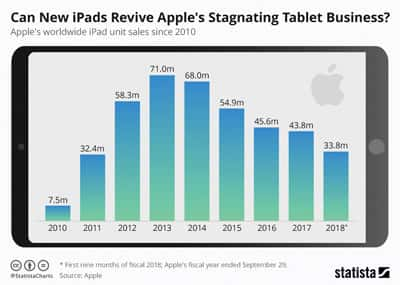top 10 tech trends
Gartner, Inc. recently highlighted the top strategic technology trends for 2019. Gartner defines a strategic technology trend as one with substantial disruptive potential that is beginning to break out of an emerging state into broader impact and use, or which are rapidly growing trends with a high degree of volatility reaching tipping points over the next five years. Here are the top 10 trends to watch for in the months ahead.
Autonomous Things. Robot, drones and autonomous vehicles use AI (artificial intelligence) to automat functions previously performed by humans.
Augmented Analytics. Machine learning (ML) is used to transform how analytics content is developed, consumed and shared.
All Driven Development. Another level of opportunity for professional application development arises as AI is applied to the development process itself to automate various data science, application development and testing functions. By 2022, at least 40 percent of new application development projects will have AI co-developers on their team.
Empowered Edge refers to endpoint devices used by people or embedded in the world around us. Information processing, and content collection and delivery, are placed closer to these endpoints. It tries to keep the traffic and processing local, with the goal being to reduce traffic and latency.
Immersive Experience. Conversational platforms are changing the way people interact with the digital world. Virtual reality (VR), augmented reality (AR) and mixed reality (MR) are changing digital world perception, leading to the future immersive user experience.
Blockchain. A type of distributed ledger, blockchain promises to reshape industries by enabling trust, providing transparency and reducing friction across business ecosystems potentially lowering costs, reducing transaction settlement times and improving cash flow.
Smart Spaces. These are a physical or digital environment where humans and technology-enabled systems interact in increasingly open, connected, coordinated and intelligent ecosystems.
Digital Ethics and Privacy. This is a growing concern for individuals, organizations and governments. People are increasingly concerned about how their personal information is being used by organizations in both the public and private sector, and the backlash will only increase for organizations that are not proactively addressing these concerns.
Quantum Computing (QC) is a type of nonclassical computing that operates on the quantum state of subatomic particles (for example, electrons and ions) that represent information as elements denoted as quantum bits (qubits).
gartner.com
fast facts
The technology world is fast-moving and always evolving with endless information available at your fingertips. Chances are, you may not have known about these fun tech facts that are sure to get you “dialed in.”
PCs went by the name “Electronic Brains” in the 1950s.
Email has been around longer than the World Wide Web.
HP, Google, Microsoft and Apple have just one thing in common, other than the fact that they are IT companies. They were all started in garages.
There are approximately 6,000 new viruses released every month.
28 percent of IT professionals hide their career from friends and family to get out of giving free tech support.
Technophobia is the fear of technology, Nomophobia is the fear of being without a mobile phone, Cyberphobia is the fear of computers.
The original name of Windows was Interface Manager.
The Internet is more than 10,000 days old.
51 percent of Internet traffic is “non-human,” and 31 percent is made up from hacking programs, spammers and malicious phishing.
The name Google was created accidentally. A spelling error was made by the original founders, who were under the impression they were going for “Googol.”
www.globallead.co.za
apple falls from the tree
Still the best selling tablet in the world, the Apple iPad has seen a sales drop in recent years, four consecutive years since 2013. A rising trend in phablets, larger mobile phones that work as both cell phones and tablets, are a leading cause in sales drops as well as longer upgrade cycles. Here’s a look at worldwide iPad sales since 2010.




